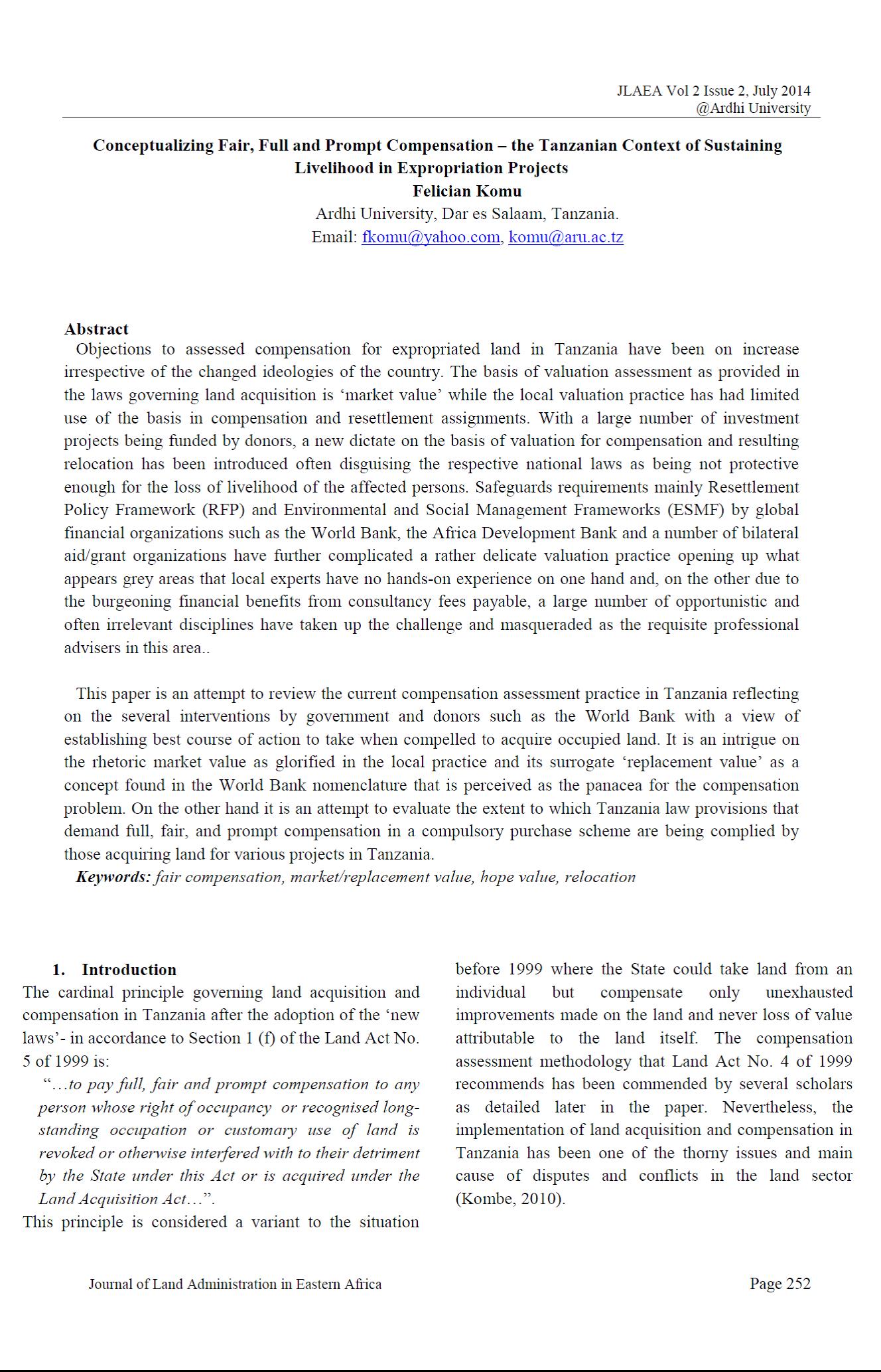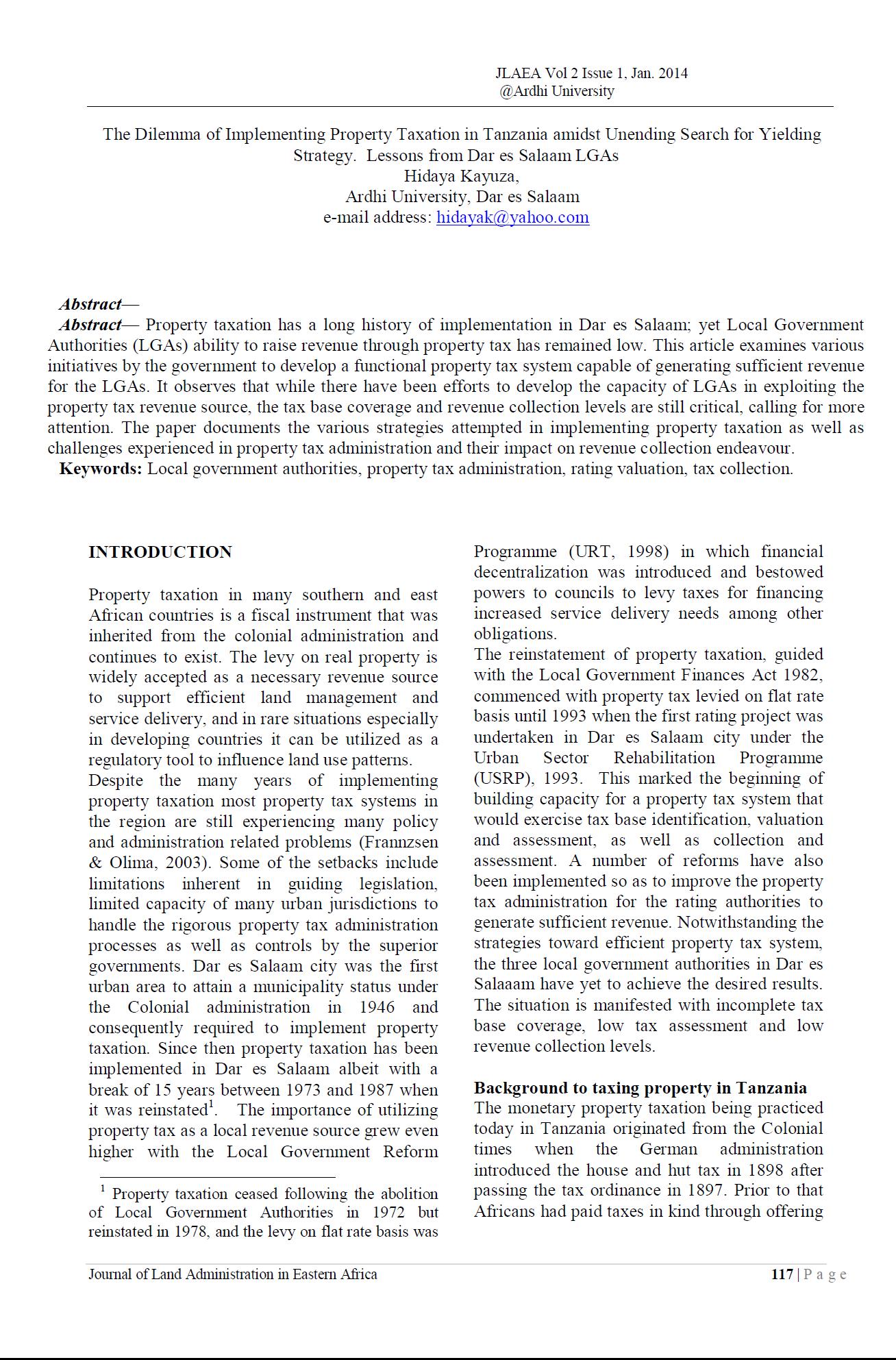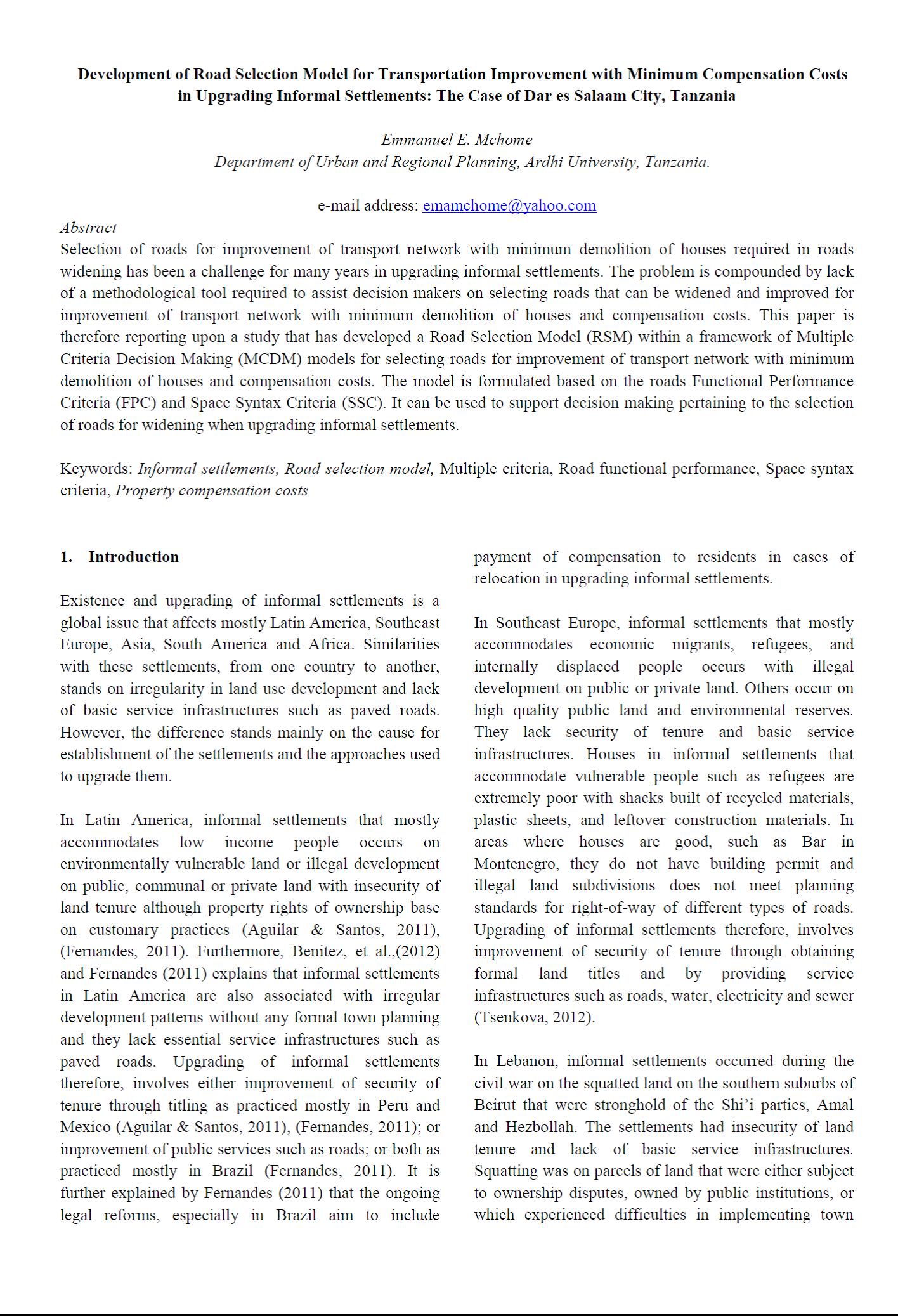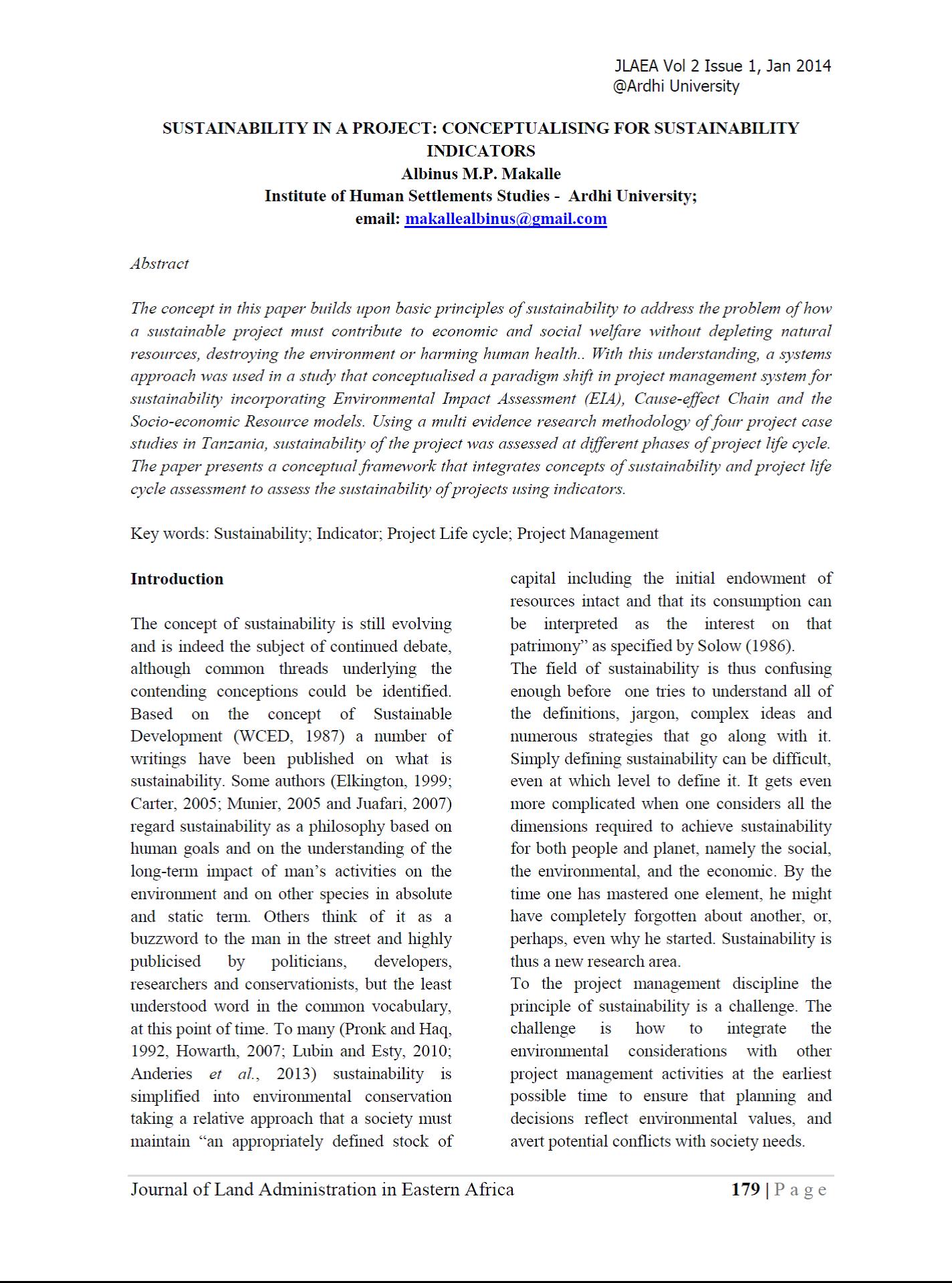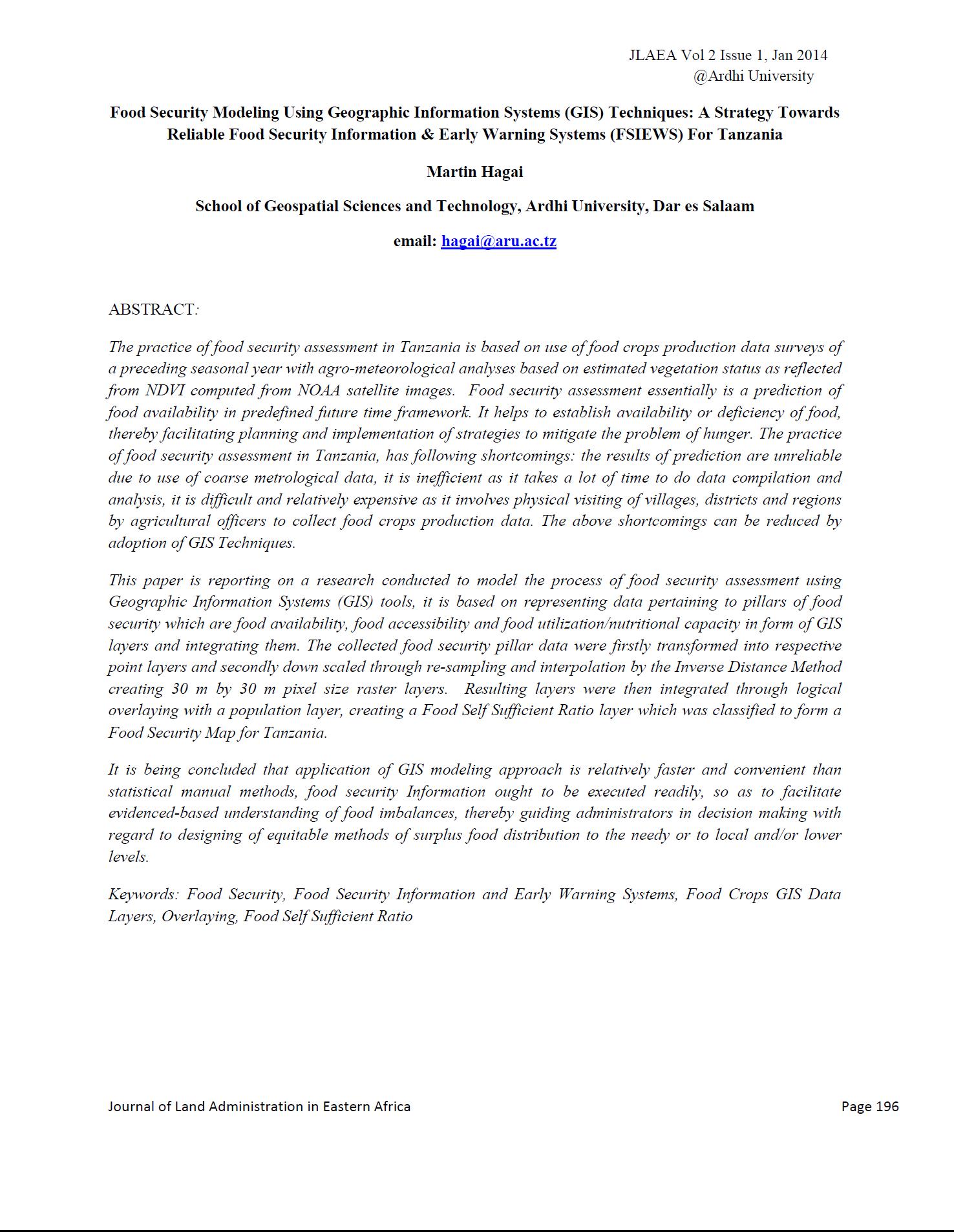Focal point
Location
The Journal of Land Administration in Eastern Africa (JLAEA) is publication of the Land Administration Unit that was set up at ARU in November 2009. JLAEA mirrors the aspirations of the Land Administration Unit at Ardhi University (ARU) whose mission is to ensure quality education and training, research, scientific publications, information dissemination, documentation and public services through integrated cross disciplinary team work in land administration. In November 2011, Ardhi University agreed to a suggestion by the newly established Eastern African Land Administration Network (EALAN) to make the Journal, a property of the network. The EALAN comprises of universities conducting education and training in land administration in Tanzania, Kenya, Uganda, Ethiopia and Rwanda.
Purpose of the Journal
The evolving need for a multi-disciplinary approach in land administration has been well captured by the United Nations institutions drawing experiences from different countries across the globe. In East Africa, land administration is increasingly becoming a crosscutting discipline and no longer limited to the mundane land allocation and use control enforcement processes. It is more diverse and anchored in information communication technology and democratic institutional systems within the land sector. For training institutions such as Ardhi University (ARU), the challenge has been to train the new brand of land administrator who will have to work with the single-discipline trained land sector specialists.
The Journal of Land Administration in Eastern Africa (JLAEA) is publication of the Land Administration Unit that was set up at ARU in November 2009. JLAEA mirrors the aspirations of the Land Administration Unit at ARU whose mission is to ensure quality education and training, research, scientific publications, information dissemination, documentation and public services through integrated cross disciplinary team work in land administration. In November 2011, Ardhi University agreed to a suggestion by the newly established Eastern African Land Administration Network (EALAN) to make the Journal, a property of the network. The EALAN comprises of universities conducting education and training in land administration in Tanzania, Kenya, Uganda, Ethiopia and Rwanda
Members:
Resources
Displaying 21 - 25 of 34Conceptualizing Fair, Full and Prompt Compensation – the Tanzanian Context of Sustaining Livelihood in Expropriation Projects
Objections to assessed compensation for expropriated land in Tanzania have been on increase irrespective of the changed ideologies of the country. The basis of valuation assessment as provided in the laws governing land acquisition is ‘market value’ while the local valuation practice has had limited use of the basis in compensation and resettlement assignments.
The Dilemma of Implementing Property Taxation in Tanzania amidst Unending Search for Yielding Strategy.
Property taxation has a long history of implementation in Dar es Salaam; yet Local Government Authorities (LGAs) ability to raise revenue through property tax has remained low. This article examines various initiatives by the government to develop a functional property tax system capable of generating sufficient revenue for the LGAs. It observes that while there have been efforts to develop the capacity of LGAs in exploiting the property tax revenue source, the tax base coverage and revenue collection levels are still critical, calling for more attention.
Development of Road Selection Model for Transportation Improvement with Minimum Compensation Costs in Upgrading Informal Settlements
Selection of roads for improvement of transport network with minimum demolition of houses required in roads widening has been a challenge for many years in upgrading informal settlements. The problem is compounded by lack of a methodological tool required to assist decision makers on selecting roads that can be widened and improved for improvement of transport network with minimum demolition of houses and compensation costs.
SUSTAINABILITY IN A PROJECT: CONCEPTUALISING FOR SUSTAINABILITY INDICATORS
The concept in this paper builds upon basic principles of sustainability to address the problem of how a sustainable project must contribute to economic and social welfare without depleting natural resources, destroying the environment or harming human health.. With this understanding, a systems approach was used in a study that conceptualised a paradigm shift in project management system for sustainability incorporating Environmental Impact Assessment (EIA), Cause-effect Chain and the Socio-economic Resource models.
Food Security Modeling Using Geographic Information Systems (GIS) Techniques
The practice of food security assessment in Tanzania is based on use of food crops production data surveys of a preceding seasonal year with agro-meteorological analyses based on estimated vegetation status as reflected from NDVI computed from NOAA satellite images. Food security assessment essentially is a prediction of food availability in predefined future time framework. It helps to establish availability or deficiency of food, thereby facilitating planning and implementation of strategies to mitigate the problem of hunger.


